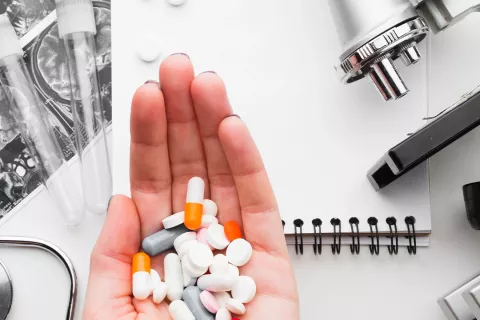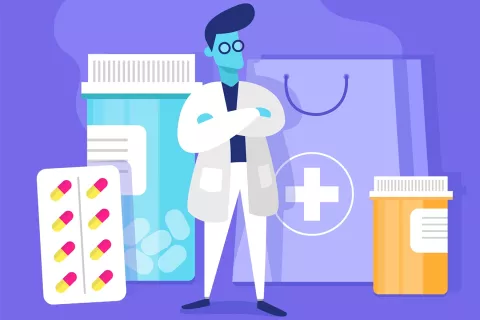In the critical arena of pharmacovigilance, where even minor inconsistencies can have life-altering consequences, standardized terminologies are the bedrock of drug safety. These shared languages, like MedDRA (Medical Dictionary for Regulatory Activities), WHO-DD (WHO Drug Dictionary), and Core Company Dictionary, act as powerful tools for ensuring clear, consistent communication and analysis of adverse events and drug reactions. Let's explore the significance of each of these dictionaries and how they act in concert to safeguard public health.
MedDRA: Standardizing Medical Language
MedDRA serves as the universal language in pharmacovigilance, offering a standardized framework for describing medical events. Developed by the International Council for Harmonisation of Technical Requirements of Pharmaceuticals for Human Use (ICH), MedDRA provides a comprehensive set of codes (called Preferred Term) covering symptoms, diagnoses, procedures, and lab results. Its hierarchical structure allows for consistent reporting and analysis of adverse events globally.
Role in Pharmacovigilance:
- Standardization: MedDRA ensures consistency in reporting adverse events, facilitating uniform communication among researchers, and understanding by healthcare professionals worldwide.
- Efficient Coding: Adverse event reports are coded using MedDRA terms, enabling efficient data processing and signal detection.
- Regulatory Compliance: Regulatory agencies like the United States Food and Drug Administration (FDA) and the European Medicines Agency (EMA) mandate the use of MedDRA, making it essential for compliance in pharmacovigilance activities.
WHODD: Precision in Drug Identification
Complementing MedDRA, WHO-DD focuses on the specific identification of drugs. Maintained by the World Health Organization (WHO), this dictionary contains a vast repository of drug names, including both generic and brand names, along with detailed information on active ingredients and dosage forms. WHO-DD ensures precise identification and tracking of drugs involved in adverse events, facilitating accurate analysis and communication.
Role in Pharmacovigilance:
- Accurate Identification: WHODD offers a standardized reference for identifying pharmaceutical products, ensuring precise identification of drugs involved in adverse events for effective signal detection and risk assessment.
- Standardized Nomenclature: WHODD establishes a global standard for drug names, enhancing consistency and clarity in communication among healthcare professionals, regulatory agencies, and pharmaceutical companies, minimizing errors in adverse event reporting and data exchange.
- Data Exchange Facilitation: WHODD serves as a common language for sharing drug-related information, facilitating seamless data exchange and collaboration among stakeholders in pharmacovigilance, leading to improved detection and management of adverse drug reactions.
- Regulatory Compliance Support: Regulatory agencies rely on WHODD for drug identification and classification in pharmacovigilance submissions, ensuring compliance with standards and streamlining the approval process for pharmaceutical products.
Core Company Dictionary: Tailored Solutions for Pharmaceutical Entities
In addition to global standards, like MedDRA and WHO-DD, pharmaceutical companies maintain their own Core Company Dictionaries. These dictionaries are customized to the company's specific product portfolio, including brand names, unique drug combinations, and side effects observed in clinical trials. By building upon the foundation of MedDRA and WHO-DD, Core Company Dictionaries provide tailored solutions for internal pharmacovigilance operations.
Role in Pharmacovigilance:
- Customization: Core Company Dictionaries allow companies to define terms and codes aligned with their product portfolio and therapeutic areas.
- Integration: By mapping internal terms to standardized terminologies, Core Company Dictionaries facilitate interoperability with external databases and regulatory submissions.
- Flexibility: These dictionaries can adapt to changes in product lineup or pharmacovigilance processes, ensuring relevance and accuracy over time.
Collaborative Approach for Drug Safety
In conclusion, MedDRA, WHO-DD, and Core Company Dictionary work in harmony to ensure clear, consistent, and accurate communication in pharmacovigilance. MedDRA provides a standardized foundation for adverse event reporting, WHO-DD offers precision in drug identification, and Core Company Dictionaries tailor the language to meet specific company needs. By leveraging these dictionaries effectively with the assistance of a seasoned expert like Freyr, pharmaceutical companies can enhance their ability to identify and mitigate potential risks associated with medicinal products, ultimately contributing to the development of safer and more effective medications.










